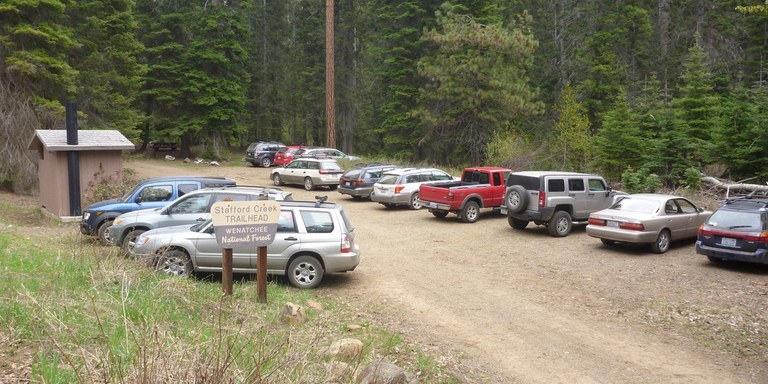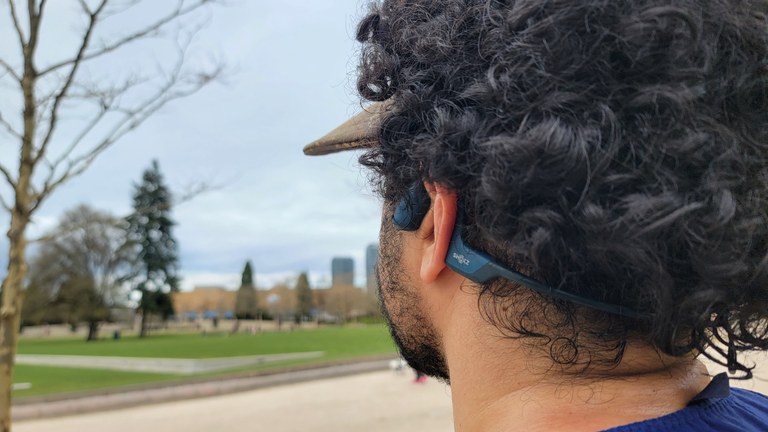Writing down 7 unwritten rules of hiking
Hiking is pretty easy, conceptually. Start at a trailhead and walk on a path until you get to where you're going, or turn around when you feel like it. To be prepared, you need a backpack full of water, food, extra clothes and a first-aid kit, just in case.
But it can become quite complex as you learn what it takes to plan and pack for a hike, and the unwritten rules of hiking make it tricky to "hike right." If you don't have a parent, friend or mentor teaching you the norms of hiking, you may unintentionally commit a faux pas that no one will actually point out to you because we're Washingtonians, confrontation is really not our thing.
So to help you hike like a pro, we've pulled together a handful of unwritten rules of hiking and how to navigate them. They'll make you extra savvy on trail, and will help you contribute to a nice atmosphere on your hikes. And for those of you who already know these rules, a gentle reminder or heads up to someone who may not know goes a lot farther than side-eye as you pass them on trail.
Park head-in at the trailhead
Trailhead parking areas aren't huge. Try to park your vehicle perpendicular (90 degrees) to the edge of the lot. This allows more room for cars to park, and reduces the damage vehicles might do to land at the edges of the lot.

Uphill hikers have right of way (but there are a ton of instances where this might not apply)
Stepping aside to let hikers come uphill is the default, but there are lots of reasons this might not happen.

If someone's taking a break as they hike uphill, don't pressure them to keep going just to abide by this norm. If you can both stay on trail safely, just pass each other without yielding (this would typically be on a pretty wide trail — about 4 to 5 feet).
- Who yields to whom
- Did you know there's a standard for who yields to whom on trails that allow horses, hikers and bikers?
If the trail is flat, it may be hard to determine who is uphill. Step to the side and let the other party by if the trail is flat but narrow. If the trail is wide, you may not have to step aside at all. If you're just one hiker encountering a large group coming downhill, it is less impactful for you to step aside to let them by (see photo); so go ahead and do that.
If you're not sure what to do, stepping aside to let someone else get by is the generous move.
Let other hikers know you'd like to pass
If you're coming up behind someone on trail and are need to pass them, don't crowd them. Just ask to pass them, rather than breathing heavily behind them for a quarter mile before they notice you. Offer a heads up by saying: "on your left" or "could I please get by?" then pass as you would in vehicle traffic: to the left of the person you're passing.
It's polite and makes a big difference; it's much more pleasant to be asked than being blown by without acknowledgement.
Don't use Bluetooth speakers
Hiking with music (or podcasts) might be your vibe, but it's not everyone's. Plus, it's important to be aware of your surroundings while you're hiking, especially if it's stormy (so you can listen for trees falling) or you're hiking alone (listen for animals or other people needing to pass you).

Bone conduction headphones (pictured above) rest just in front of your ear canal, and transmit sound through your cheekbones rather than directly into your ear canal. They're a better option if you need to use headphones while you hike. Photo by Joe Gonzalez.
If you need something to listen to to motivate you up the hill, wear headphones. Consider bone-conduction headphones, which keep your ear canal clear and let in some outside noise.
Pick up after yourself
There are no staff who clear trails of litter on a regular basis. And that orange peel or apple core will take far longer to compost than you think. So we are all responsible for hiking out everything we hike in. We recommend carrying a small tupperware or similar box that seals shut. It's light, squish-proof, and a great receptacle for your trash as well as your dogs' poop bags. (If you hike with a dog, you're responsible for hiking their poop out, just like in the city.)
Don't feed (or approach) Animals
 Especially on popular trails, a lot of animals have learned that humans = easy food. No matter how cute (or insistent) they are, don't feed them. Habituated birds might make you feel like you're in a Disney movie, but feeding them teaches animals to rely on people and not hunt for themselves. Plus, food left for smaller animals might attract larger creatures, like bears.
Especially on popular trails, a lot of animals have learned that humans = easy food. No matter how cute (or insistent) they are, don't feed them. Habituated birds might make you feel like you're in a Disney movie, but feeding them teaches animals to rely on people and not hunt for themselves. Plus, food left for smaller animals might attract larger creatures, like bears.
Related: don't approach animals. Even if they're used to people, animals can be very unpredictable, and engaging with them can result in injury to yourself or to them. That includes letting birds land on your head or offering your fingers to curious chipmunks
Share the space
So you've made it to your destination and you're ready for a break. You deserve it! If you're sharing your destination with other people, remember you're all contributing to the atmosphere. Err on the side of quiet: Skip breaking out music to celebrate (for example). And if you prefer the quiet, acknowledge that people celebrate hiking differently — there may be the occasional shout of joy or laugh nearby. Lastly, be sure to share the space so everyone gets a chance to rest.
-
If there’s only one place to sit, share it with other hikers after you've had a chance to rest.
-
If you're at a lookout tower, try not to sit on the catwalks (the little pathway that encircles the lookout itself). Sitting there makes it hard for other hikers to get past you.
- Lookouts are typically managed by reservation, but if you're visiting one that is first-come first served, be prepared to share the space during the day as day hikers visit, and even at night if there's room for another camper to fit inside.
Most of all, don't shame anyone who doesn't seem to know these rules. Assume that people are coming from a place of not-knowing, not malice. Is their behavior negatively affecting your own experience? Try saying something directly to them, but assume they simply don't know they're affecting you, not out of intention.

